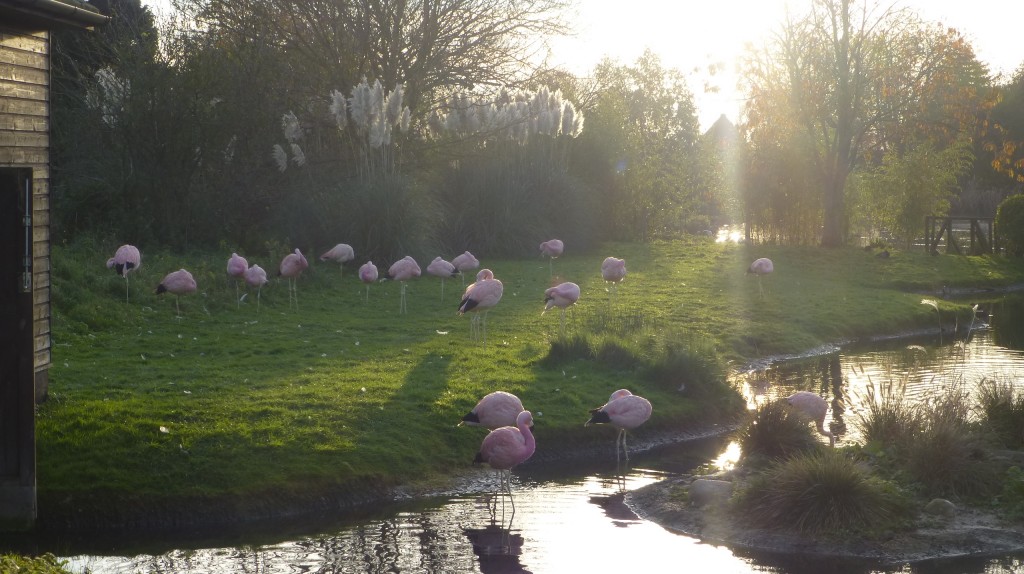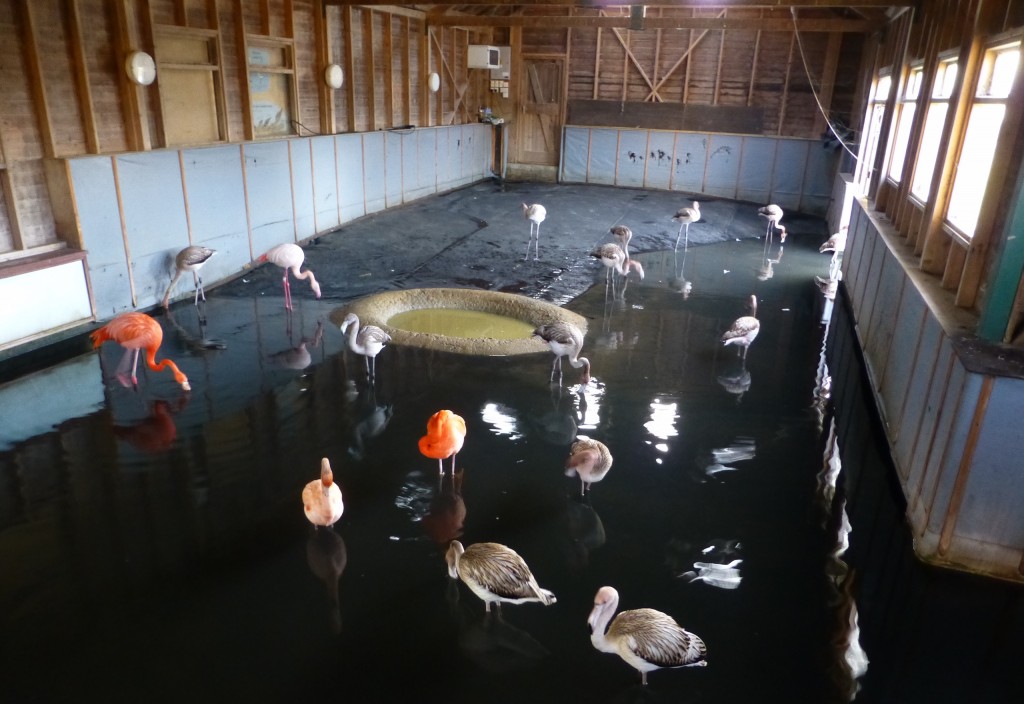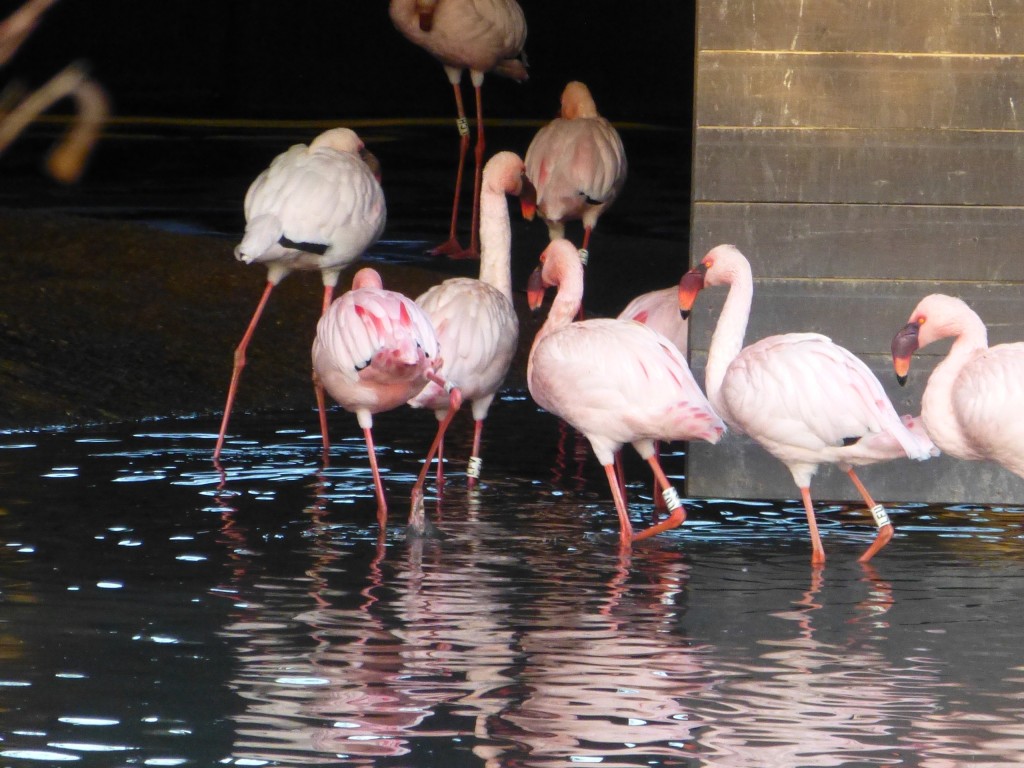Why do flamingos need houses?
If you wander around the grounds of any of the WWT centres that keeps flamingos you will find large indoor houses (think enormous garden shed but more damp) attached to each flamingo enclosure. These indoor houses are really important for keeping flamingos happy and healthy in different times of the year. Specifically when it gets cold... colder... and maybe even freezing over winter.
Flamingos and ice do not mix (more on that later) so in order to ensure that they can continue to thrive over the winter the birds will be fed and sheltered inside their houses on cold days. The different species of flamingo use their houses differently, dependent on the weather. The Andean flamingos and Mr James are hardy birds, coming from the high altitudes of South America so they can be found outside even when we humans are layered up in gloves, scarves, hats and winter coats. The more tropical birds, Caribbeans and lessers for examples, are more sensitive souls and like their home comforts. In fact, there is a nice example of this right now, with this chilly November weather driving the juvenile Caribbean flamingos into the house they share with the Andean flamingos whilst the house's namesakes all do their thing outside.


The little lesser flamingo, weighing around one kilo, likes the heat lamps that are installed in the roof of its house (in fact all flamingo houses have heaters in them) and the birds can be seen stomping up and down, performing their marching behaviour when the heaters get turned on. The lesser flamingos are actually rather cute to watch at this time of the year and will all trundle inside when it starts to get dark, putting themselves to bed.

Iced over water can be very bad for the health and welfare of wild flamingos. Wild flocks in the south of France have been cared for by wildlife rescue organisations when their pools have frozen over and the flamingos have had no access to food. Too much snow means the flamingos cannot move to new feeding areas so they have to wait and hope the weather thaws out in time. Flocks of wild Andean and Chilean flamingos have also been photographed marooned in the middle of their feeding lakes in Argentina, frozen into the ice. The birds have had to wait until the ice melts before they can escape. Of course, flamingos have very fragile legs so we would not want them ever to come into contact with icy water here at WWT. Hence the need to prevent these types of affair from occurring in captivity. The clip below shows the folks at WWT Slimbridge putting the huge flock of greater flamingos to bed. What good team work and very organised work!
https://www.youtube.com/watch?v=ZgnAJ6avwJg



